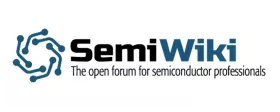The IP Paradox: Sales are growing despite Semi Consolidation
IPnest is launching the “Interface IP Survey” since 2009, and we did it last September again. To build the survey as accurately as possible, I have followed the “divide and conquer” strategy. Interface protocols are varied, ranging from PCI Express, USB, or Ethernet, to memory controller (DDR3, DDR4, LPDDR3, LPDDR4 and more) and HDMI, DisplayPort, SATA, SAS, or MIPI specifications (CSI, DSI, I3C, M-PHY, D-PHY, C-PHY…).
Some protocols are ubiquitous like USB or memory controller while certain protocols are application specific like SATA, HDMI or DisplayPort. In other words, for a specific protocol, the adoption dynamic and the related IP sales behavior will follow a certain model, and this model will be different for another protocol. In order to “conquer” (understand the adoption behavior, the sales evolution and build a forecast), you have to “divide” the overall interface IP market, or segment it by protocol. As a consequence, you have to define different values for the same parameter (like adoption rate, externalization rate, etc.) whether it will be used to model the PCI Express IP market or the HDMI IP market.
To read the full article, click here
Related Semiconductor IP
- HBM4 PHY IP
- Ultra-Low-Power LPDDR3/LPDDR2/DDR3L Combo Subsystem
- HBM4 Controller IP
- IPSEC AES-256-GCM (Standalone IPsec)
- Parameterizable compact BCH codec
Related Blogs
- The Blind Spot of Semiconductor IP Sales
- Semi Market Decreased by 8% in 2023... When Design IP Sales Grew by 6%!
- The Growing Importance of PVT Monitoring for Silicon Lifecycle Management
- Analog Bits Steals the Show with Working IP on TSMC 3nm and 2nm and a New Design Strategy
Latest Blogs
- Formally verifying AVX2 rejection sampling for ML-KEM
- Integrating PQC into StrongSwan: ML-KEM integration for IPsec/IKEv2
- Breaking the Bandwidth Barrier: Enabling Celestial AI’s Photonic Fabric™ with Custom ESD IP on TSMC’s 5nm Platform
- What Does a GPU Have to Do With Automotive Security?
- Physical AI at the Edge: A New Chapter in Device Intelligence
